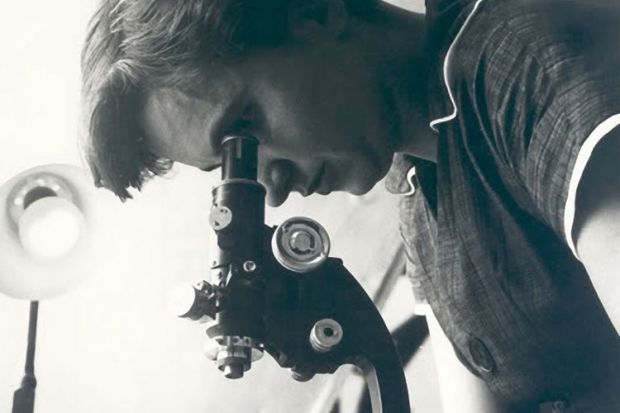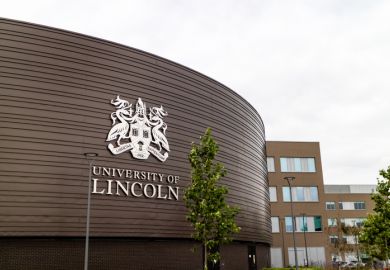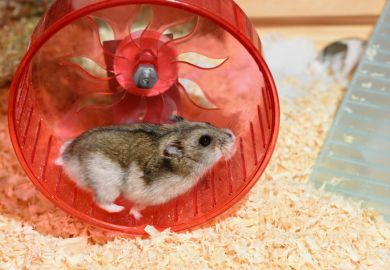Overlooked: Rosalind Franklin’s work was vital to decoding DNA’s structure
Names such as Florence Durham and Elizabeth Press may not immediately spring to mind when considering the history of medicine but efforts are under way to get them recognised alongside the likes of Francis Crick and Sir John Gurdon on one of the world’s most influential platforms: Wikipedia.
Last week the National Institute of Medical Research (NIMR) hosted an “edit-a-thon”, aimed at bolstering entries for female Medical Research Council-affiliated scientists and creating articles for others who have been forgotten.
Held on 25 July – symbolic as the birthday of the often overlooked X-ray crystallographer Rosalind Franklin – the event is the first of six that the MRC is running throughout 2013 as part of its centenary celebrations.
Attendees at the session, 20 women and three men, were versed in how to create and edit articles and given access to the NIMR Library and Wellcome Library collections to help create content.
Not only are female scientists under-represented on Wikipedia pages, less than 10 per cent of the website’s editors are thought to be women, representatives from Wikimedia UK – the national charity that supports the online encyclopedia – told attendees.
Edith Sim, dean of science, engineering and computing at Kingston University, worked on the page about Elizabeth Press, an immunologist who contributed to research into the structure of antibodies that won Rodney Porter the 1972 Nobel prize, but who Professor Sim said remained “hidden” to the public.
Professor Sim had never before edited a Wikipedia page but said she planned to use the skills to boost the profiles of female academics at her own institution.
Doing this “can change who people think are important. There’s power through this,” she added.
A PhD student at the NIMR and University College London, Benjamin Drury, who edited the page about geneticist Florence Durham, said he was there to learn as well as contribute. “There are definitely missing women, and I wanted to find out who they are, especially in my field,” he explained.
The day also included an institution-wide talk and panel discussion about issues faced by women in science, led by professor of experimental physics at the University of Cambridge Dame Athene Donald, NIMR group leader Anne O’Garra and the institute’s director, Jim Smith.
One reason for hosting the day was to find out what issues people really wanted tackled as partof the institution’s efforts underthe Athena SWAN Charter, said Professor Smith.
Policies that promoted a good work-life balance in such a competitive line of work were good for everyone, he said, adding that progress made at the NIMR would be applied to the Francis Crick Institute, which would have the benefit of starting from scratch when staff moved there in 2015.
Professor Smith said that he hoped someone at the edit-a-thon would add to the page of his former colleague, the developmental biologist Rosa Beddington, who died in 2001. “The more people you can see doing science, the more you realise it is possible to do it without being a superwoman,” he added.
At the talk, Professor Donald said that the biggest changes would come once being a female scientist was “culturally normal”. “What I really want to see is a woman scientist in Coronation Street,” she added.
elizabeth.gibney@tsleducation.com
Equal opportunities: £1m fund to advance diversity
The University of Oxford has launched a fund aimed at advancing diversity among academic and research staff.
The £1 million Vice-Chancellor’s Diversity Fund will, in particular, be used to get more women into senior academic positions, said Stephen Goss, Oxford’s pro vice-chancellor for personnel and equality.
Such funds more often exist in the US and Germany but are relatively unheard of in the UK. Impetus to create the fund came from progress already made at the university in advocating equality in academic promotions and decision-making committees, explained Dr Goss.
There was no doubt, however, that extra resources were needed, he said. “Some things you can do by thinking, for others you needfunding, and to have funds identified for this purpose is great.”
A cross-disciplinary committee will distribute the cash, and the pot is likely to be topped up in the future, added Dr Goss.
Funding is expected to be used differently across academic divisions, although in all departments there will be a strong focus on recruitment and retention, he said.
Initiatives are likely to include expanding a scheme currently funded by the Engineering and Physical Sciences Research Council to help academics returning from a career break to get “up to speed”. This provides funds to pay for support including assistants, teaching “buyouts”and hosting researchcollaborators.
The fund may also be used to pay for training to make panel chairs more aware of the potential for “unconscious bias” against women in appointments, added Dr Goss.
Register to continue
Why register?
- Registration is free and only takes a moment
- Once registered, you can read 3 articles a month
- Sign up for our newsletter
Subscribe
Or subscribe for unlimited access to:
- Unlimited access to news, views, insights & reviews
- Digital editions
- Digital access to THE’s university and college rankings analysis
Already registered or a current subscriber? Login




